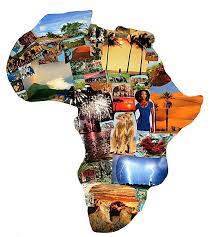Unlocking Africa's Potential: Strategies for Gender Equality

Updated at: 2025-02-20 12:14:59 (9 months ago by Melkisedeck Leon Shine)
```htmlUnlocking Africa's Potential: The Imperative of Gender Equality
Africa, a continent pulsating with dynamism and rich diversity, possesses an immense reservoir of untapped potential. Realizing this potential and forging a brighter future hinges on a fundamental commitment to gender equality. Empowering women and girls is not merely a social imperative; it is the cornerstone of a prosperous and self-sufficient Africa.
The detrimental impact of gender inequality on economic growth is undeniable. It stifles innovation, restricts opportunities, and undermines progress across all sectors. To build a truly inclusive and flourishing Africa, we must guarantee equal access to education, healthcare, and economic opportunities for all citizens, irrespective of gender. This inclusive approach fosters a more robust and equitable society.
We find inspiration in the legacies of transformative leaders who championed gender equality. Nelson Mandela's profound statement, "Freedom cannot be achieved unless women have been emancipated from all forms of oppression," serves as a powerful reminder of the interconnectedness of freedom and gender justice. Embracing this spirit, we strive to create a society where women are empowered to reach their full potential and thrive.
Breaking free from restrictive gender stereotypes is crucial for building an independent and self-reliant Africa. Challenging the notion that specific roles or responsibilities are inherently masculine or feminine is essential. We must celebrate diversity and promote equal opportunities across all sectors – from business and politics to science and technology – fostering an environment where talent flourishes regardless of gender.
Investment in quality education for girls is paramount. Providing girls with equal access to education empowers them with the tools and knowledge necessary to become leaders and agents of change. Encouraging our daughters to pursue their ambitions and providing the necessary support to achieve their dreams is an investment in Africa's future.
The benefits of gender equality extend far beyond individual empowerment. Research consistently demonstrates that when women have equal access to resources and decision-making power, they reinvest significantly in their families, leading to improvements in health, education, and overall well-being. This ripple effect strengthens families, communities, and the nation as a whole.
Learning from the experiences of other nations that have made significant strides in promoting gender equality is vital. By studying and adapting successful policies and initiatives from countries that have effectively addressed gender gaps in pay, representation, and opportunities, we can accelerate progress and create lasting, meaningful change in Africa.
A unified African approach to gender equality is essential. Collective action is required to dismantle barriers, challenge societal norms, and build an Africa where everyone has an equal opportunity to thrive. Collaboration, mutual support, and celebrating the accomplishments of African women are crucial components of this collective effort.
Individual action is equally crucial. We must each examine our own beliefs and behaviors, identifying and addressing any unconscious biases that may contribute to gender inequality. Committing to positive changes in our daily lives creates a ripple effect that transforms communities. This personal commitment, combined with collective action, creates transformative power.
Spread the message. Share this article widely – with friends, family, and colleagues. Engage in thoughtful discussions, encouraging others to join the movement for gender equality. By raising awareness and inspiring collective action, we create a brighter future for Africa.
Inclusivity is paramount. As we strive for gender equality, it's imperative that our efforts encompass all members of society, regardless of background, ethnicity, or ability. Embracing diversity and fostering an inclusive environment builds a stronger and more united Africa.
The journey towards gender equality is a marathon, not a sprint. Maintaining our commitment, persevering through challenges, and never losing sight of our goal are vital. Together, we can unlock Africa's full potential, creating a brighter and more equitable future for generations to come.
Let's initiate a dialogue. What strategies do you believe are most effective in promoting gender equality in our communities? How can we create more inclusive opportunities for women in the workforce? Share your insights and join the conversation.
Together, let's build an independent and self-reliant Africa, where the potential of every citizen is fully realized.
```



